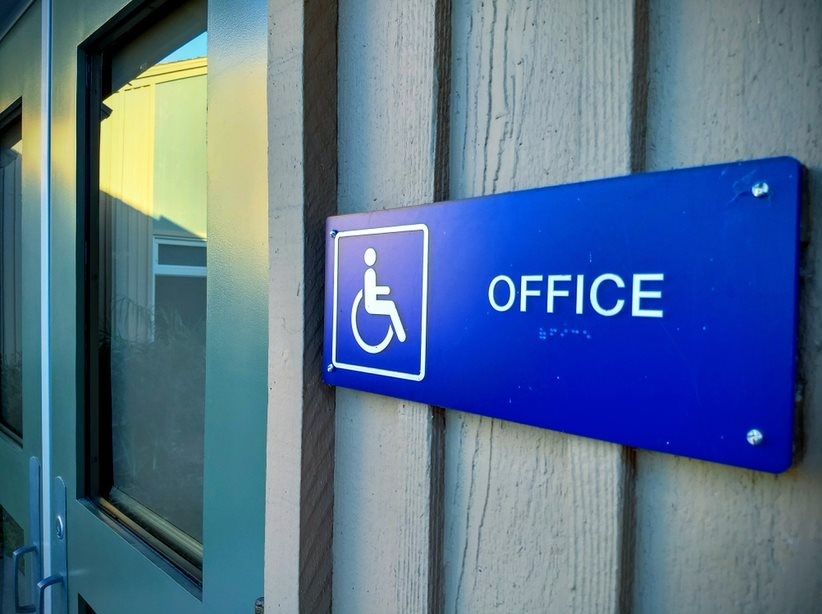ADA signs are essential components of a business’s commitment to accessibility and inclusivity. These signs, mandated by the Americans with Disabilities Act (ADA), ensure that individuals with disabilities can navigate public spaces with ease. From identifying restrooms to providing directions, ADA-compliant signs make a significant impact on the overall experience of customers, employees, and visitors. In this blog, we’ll explore the importance of ADA signs, the requirements they must meet, and how they contribute to a more inclusive environment.
What Are ADA Signs?
ADA signs are designed to meet specific guidelines set forth by the Americans with Disabilities Act. The goal is to provide clear, accessible information to everyone, including people with visual impairments, mobility challenges, and other disabilities. These signs are typically used for wayfinding, room identification, and safety instructions in public buildings, workplaces, and other commercial spaces.
The Importance of ADA Signs
ADA signs serve a crucial purpose in making businesses accessible to all individuals, regardless of their abilities. Here’s why they are so important:
1. Promoting Accessibility
The primary function of ADA signs is to ensure that all individuals, including those with disabilities, can access and navigate your business premises. These signs provide essential information in a way that is easily understandable for everyone, which is vital for creating an inclusive environment. Whether it’s identifying restrooms, exits, or specific rooms, ADA signs make it easier for people with disabilities to move around safely and independently.
2. Legal Compliance
Compliance with the ADA is not just a matter of good business practice—it’s a legal requirement. Businesses that fail to provide ADA-compliant signage risk facing fines, legal action, and damage to their reputation. By adhering to ADA guidelines, businesses demonstrate their commitment to inclusivity and avoid potential legal issues.
3. Enhancing Safety
ADA signs contribute to the safety of your premises by providing clear instructions and directions. For instance, signs indicating emergency exits or hazardous areas must be easily identifiable by everyone, including those with visual impairments. By ensuring that all individuals can understand and follow safety instructions, ADA signs help prevent accidents and improve overall safety.
4. Improving Customer Experience
In today’s competitive market, providing an exceptional customer experience is key to retaining clients and attracting new ones. ADA signs play a significant role in this by ensuring that all customers, including those with disabilities, feel welcome and accommodated. Accessible signage reflects positively on your brand, showing that you value all customers and are committed to meeting their needs.
Key Requirements for ADA Signs
To be considered ADA-compliant, signs must meet specific requirements related to their design, placement, and readability. Here are some of the key guidelines:
1. Text and Font
The text on ADA signs must be clear, easy to read, and in a sans-serif font, such as Helvetica or Arial. The font size should be appropriate for the distance from which the sign will be viewed, and the characters must be in uppercase for better legibility. Additionally, the text should contrast sharply with the background to enhance visibility.
2. Braille and Raised Characters
One of the most distinctive features of ADA signs is the inclusion of Braille text and raised characters. Braille allows individuals who are blind or have low vision to read the sign’s information by touch. Raised characters must be at least 1/32 inch above the sign’s surface and should be easy to discern by touch.
3. Color Contrast
High color contrast between the text and the background is essential for ADA signs. The ADA recommends at least a 70% contrast between the text and its background to ensure readability for individuals with visual impairments. For example, using white text on a dark blue background provides a stark contrast that is easy to read.
4. Sign Placement
The placement of ADA signs is also regulated to ensure they are easily accessible and visible. Signs identifying rooms and spaces should be mounted on the wall adjacent to the latch side of the door, typically 48 to 60 inches above the floor. For directional signs, they should be placed at a height where they can be easily seen by both seated and standing individuals.
5. Non-Glare Finish
ADA signs should have a non-glare finish to reduce reflections that can make the text difficult to read. This is particularly important in areas with bright lighting, where glare could obscure the sign’s information. A matte or satin finish is often used to meet this requirement.
Types of ADA Signs
There are several types of ADA signs, each serving different purposes. Here are some common types:
1. Room Identification Signs
Room identification signs are used to label specific rooms or spaces, such as restrooms, conference rooms, or offices. These signs must include both text and Braille, and the text must be raised to meet ADA standards. Room identification signs help individuals navigate a building and find specific areas with ease.
2. Wayfinding Signs
Wayfinding signs provide directions and help guide individuals through a building or complex. These signs are essential for ensuring that people with disabilities can easily find their way around. Wayfinding signs must include clear text, arrows, and, in some cases, Braille and raised characters.
3. Restroom Signs
Restroom signs are a critical component of ADA signage. These signs must clearly identify the location of restrooms and indicate whether they are accessible to individuals with disabilities. Restroom signs typically feature the International Symbol of Accessibility (ISA) along with text and Braille.
4. Exit and Emergency Signs
Exit and emergency signs are vital for ensuring the safety of all building occupants. These signs must be easily visible, especially in low-light or emergency situations. ADA-compliant exit signs should include clear text, arrows, and sometimes Braille to guide individuals to the nearest exit.
5. Safety and Warning Signs
Safety and warning signs alert individuals to potential hazards or provide important safety instructions. These signs must be designed to be easily understood by everyone, including those with disabilities. ADA-compliant safety signs often feature bright colors, bold text, and high contrast for maximum visibility.
Designing Effective ADA Signs
Creating ADA signs that are both compliant and visually appealing requires careful consideration of design elements. Here are some tips for designing effective ADA signs:
1. Keep It Simple
Simplicity is key when designing ADA signs. The information on the sign should be clear and concise, with no unnecessary graphics or details that could distract from the message. Focus on delivering essential information in a straightforward manner.
2. Use High-Contrast Colors
As mentioned earlier, high-contrast colors are crucial for ensuring that the text is easily readable. Choose colors that provide a stark contrast between the text and background. Common combinations include white on black, black on white, or dark blue on white.
3. Incorporate Braille and Raised Text
Make sure that all ADA signs include Braille and raised text where required. The Braille should be positioned directly below the corresponding text, and the raised text should be large enough to be easily felt by touch.
4. Consider the Overall Aesthetic
While ADA signs must meet specific guidelines, they can still be designed to complement your business’s overall aesthetic. Many businesses choose to use custom colors, fonts, and materials that align with their brand while still adhering to ADA standards. For instance, a modern office might opt for sleek, brushed metal signs with clear, black text.
5. Ensure Proper Placement
The placement of your ADA signs is just as important as their design. Make sure that signs are installed at the correct height and location to be easily accessible to all individuals. Proper placement is essential for compliance and for ensuring that the signs effectively serve their intended purpose.
The Role of Professional Signage Companies
Creating and installing ADA-compliant signs requires expertise and attention to detail. Professional signage companies have the experience and knowledge needed to design, manufacture, and install ADA signs that meet all regulatory requirements. Partnering with a professional ensures that your business remains compliant while also achieving a cohesive, visually appealing look for all your signage.
Conclusion
ADA signs are not just a legal obligation; they are a crucial part of creating an inclusive and accessible environment for everyone. By investing in ADA-compliant signage, businesses demonstrate their commitment to accessibility and inclusivity, enhancing the experience for all customers, employees, and visitors. From wayfinding and room identification to safety instructions, ADA signs play a vital role in helping individuals navigate public spaces with confidence and ease. By working with a professional signage company, you can ensure that your ADA signs are both compliant and beautifully designed, reflecting your brand’s commitment to accessibility and excellence.


